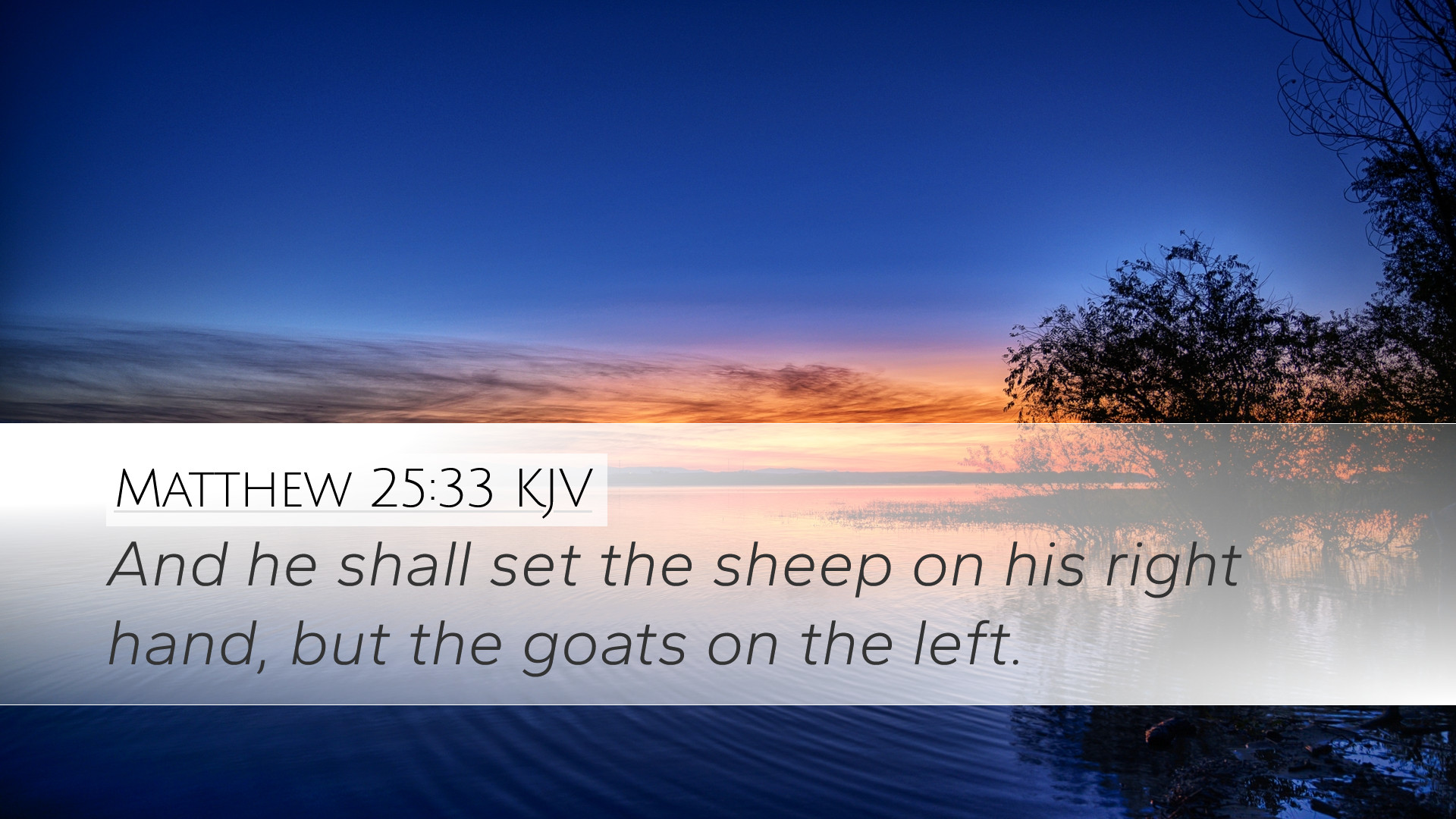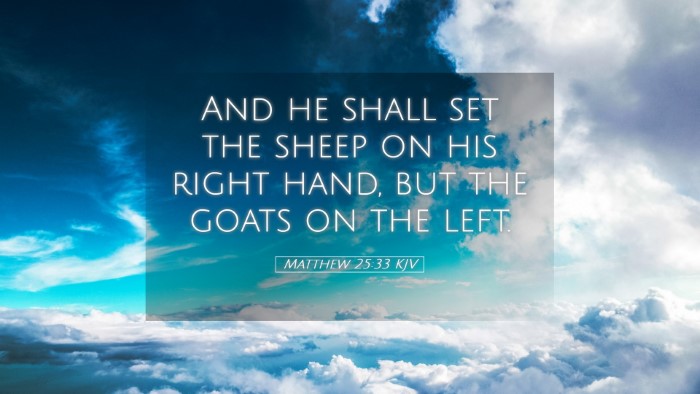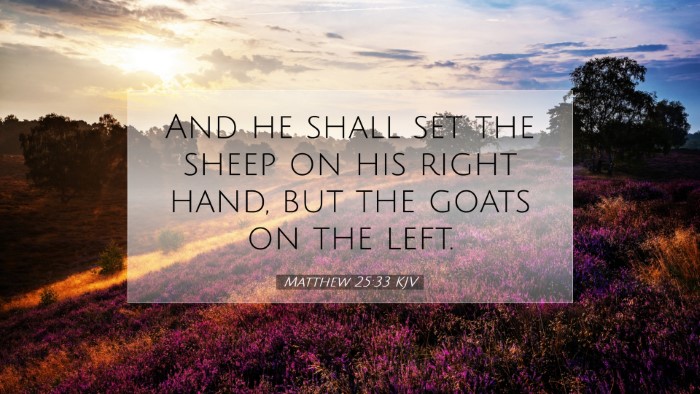Commentary on Matthew 25:33
Bible Verse: "And he shall set the sheep on his right hand, but the goats on the left."
Overview
Matthew 25:33 presents a vivid scene of divine judgment, where the separation of the righteous from the wicked is symbolized by sheep and goats. This metaphor emphasizes the distinct destinies awaiting those based on their responses to God’s commands, particularly as it relates to their treatment of others.
Theological Significance
This verse is critical and indicative of the ultimate authority of Christ in determining eternal fate. It serves as a reminder of not only Christ’s kingship but also of the moral responsibilities inherent in the Christian faith.
- Symbolism of Sheep and Goats: The 'sheep' represent the righteous who have followed Christ's teachings and engaged in loving actions, while the 'goats' symbolize those who have failed to do so.
- Right and Left Hand: In biblical times, the right hand was often associated with favor and blessing, while the left hand signified disfavor and judgment. This reinforces the gravity of the separation.
Insights from Commentators
This verse has been commented upon by many theologians throughout history. Below are insights from several significant commentators:
Matthew Henry
Matthew Henry emphasizes the authority of Christ in this passage. He notes that the separation of the sheep from the goats illustrates the final judgment, where Christ, as the judge, will display his power and righteousness. Henry draws attention to the criteria for judgment, focusing on how one's deeds reflect their faith and alignment with the will of God.
Albert Barnes
Albert Barnes elucidates the imagery used in this passage, explaining that the sheep symbolize those who have embraced the gospel and acted in love towards others. He stresses that the final judgment will not only be based on outward professions of faith but on the actual fruits of one's life. Barnes poignantly captures the essence of Christian obligation to serve and help those in need as a demonstration of genuine faith.
Adam Clarke
Adam Clarke provides an in-depth analysis of the cultural context of the passage. He explains that in the agricultural setting of Israel, sheep and goats were often intermingled, but they served different purposes. Clarke highlights that the act of distinguishing the two serves as a powerful metaphor for God’s discernment of the hearts of men. He encourages believers to reflect on their own lives to ensure they are aligning their actions with the teachings of Christ.
Practical Applications
Understanding Matthew 25:33 can lead to transformative living as it presents several practical applications for today’s believers:
- Self-Examination: Believers are called to examine their own lives and actions. Are they acting out of love and service towards others?
- Social Responsibility: The passage highlights the importance of caring for the needy and marginalized as a reflection of Christ’s own ministry.
- Anticipation of Judgment: Acknowledging that a day of reckoning will come encourages believers to live with eternity in view, making choices that align with God’s kingdom values.
- Community Engagement: Churches and congregations are urged to engage actively in outreach and service work, embodying the love of Christ in practical ways.
Conclusion
Matthew 25:33 stands as a powerful reminder of the authority of Christ and the importance of righteous living. The imagery of the sheep and goats underscores the serious implications of how one lives in relation to others. As a call to action, it compels individuals and congregations alike to reflect on their commitments to service, love, and justice, ensuring that their faith is demonstrated in tangible actions.


